Galen T. Pickett
Assoc. Professor
Physics and Astronomy
California State University Long Beach
1250 Bellflower Blvd.
Long Beach, CA 90840-3901
(562) 985-4934 vc (562) 985-7924 fax
gpickett@csulb.edu
|
|
Galen T. PickettAssoc. ProfessorPhysics and AstronomyPH3-103
California State University Long Beach 1250 Bellflower Blvd. Long Beach, CA 90840-3901 (562) 985-4934 vc (562) 985-7924 fax
|
10/25:
Here are repulsive interaction calcualtions, note the y-axis label
with "-vo/vo-theta" emphasizing that we're talking about interctions with
the *opposite* sign from normal. Note that increasing "a" tends to
decrease the "tilt". Also, larger gamma leads to smaller temperature
scales.
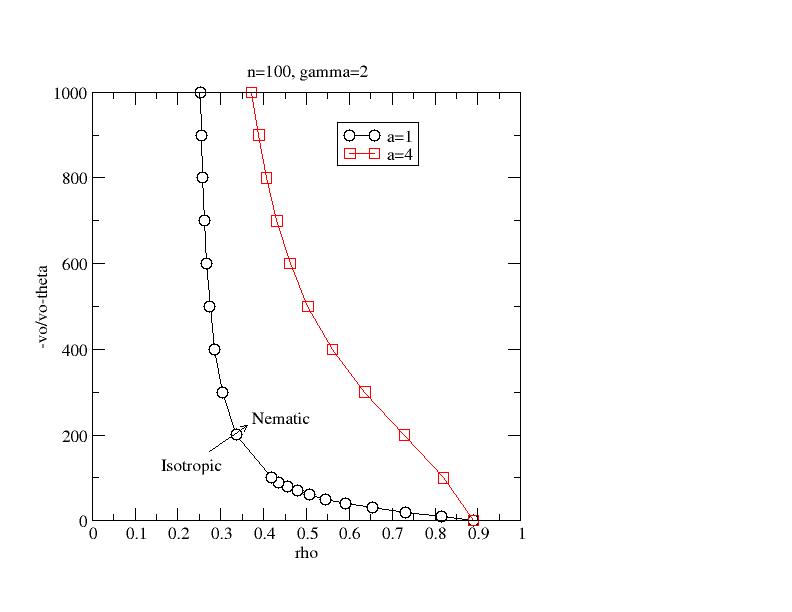 |
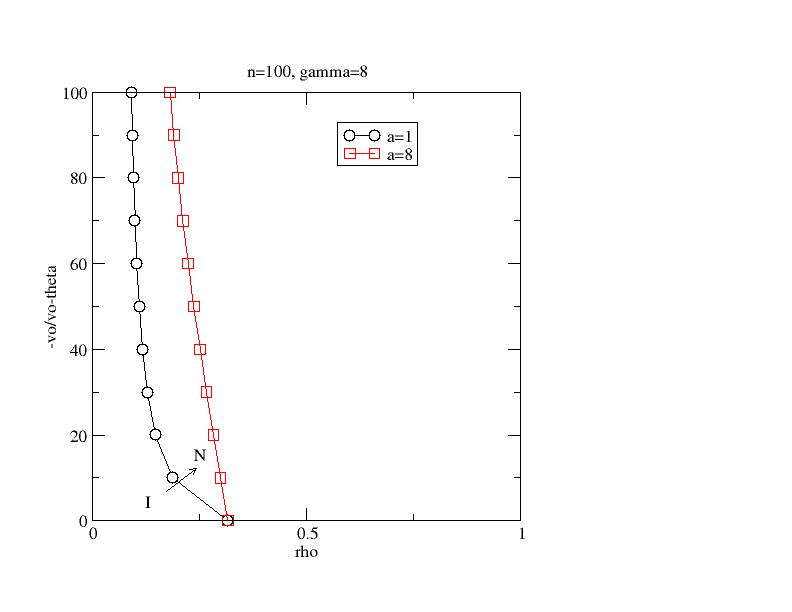 |
10/28
These are essentially the same data, but the temperature scale is
no longer tied to the theta temp. The direction of the effect is reversed
... Now, allowing the Coulomb interaction to be *less screened* (that is,
making "a" get bigger and bigger) seems to help the nematic form at lower
density. The problem is, for a-> Infinity, the whole thing should
go back to mean field but it doesn't seem to be doing that.
 |
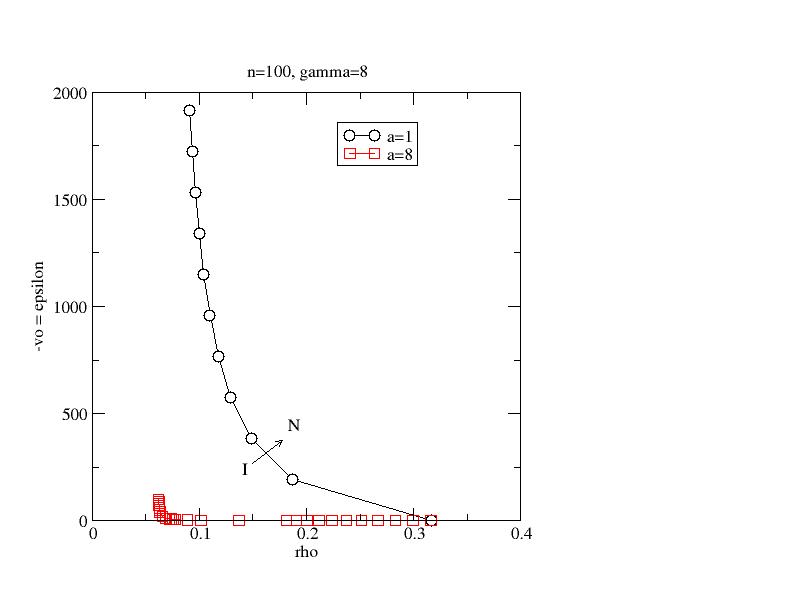 |
These calculations are based on the cutoff closure executed numerically, where the attractive part of the free energy is approximated by the usual HTA. With the numerical implementation of the cutoff, the discotic phase is no longer stable for any of the parameters. You will see that when a<1 calcualtions are posted.
Ken, results below have a=1, where a*d is the range of the attractive
Yukawa potential.
Tables for a=0.5 and a=0.25 are on the way.
Tie lines are indicated as the horizontal hashings, and the dark
dashed line indicates the position of the liquid-vapor coexistence that
has been buried by the isotropic-nematic transitions.
N=10, G=2 a=0.5
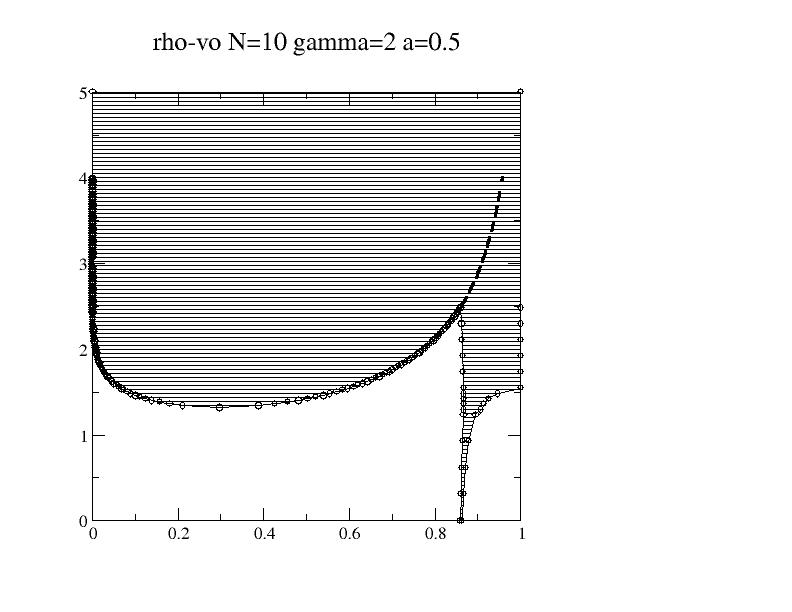 |
N=100, G=2 a=0.5
 |
N=1000, G=2 a=0.5 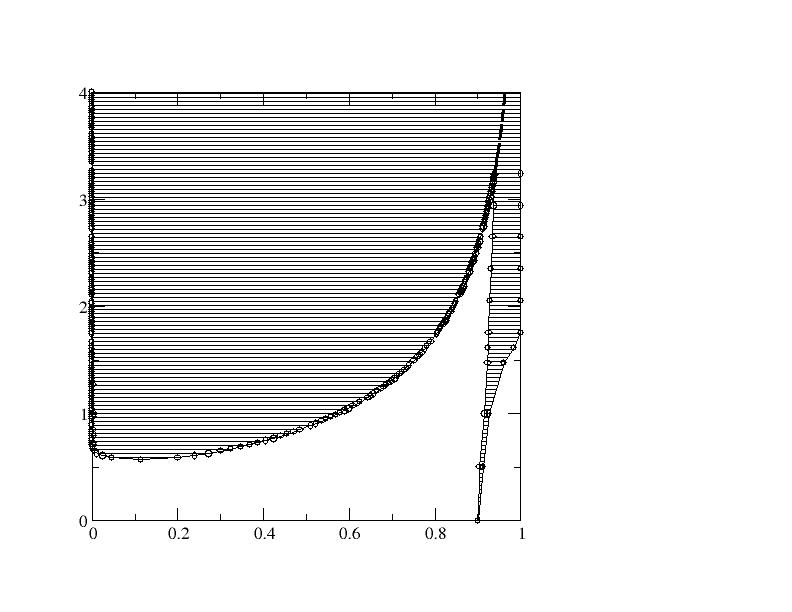 |
N=10, G=4 a=0.5  |
N=100, G=4 a=0.5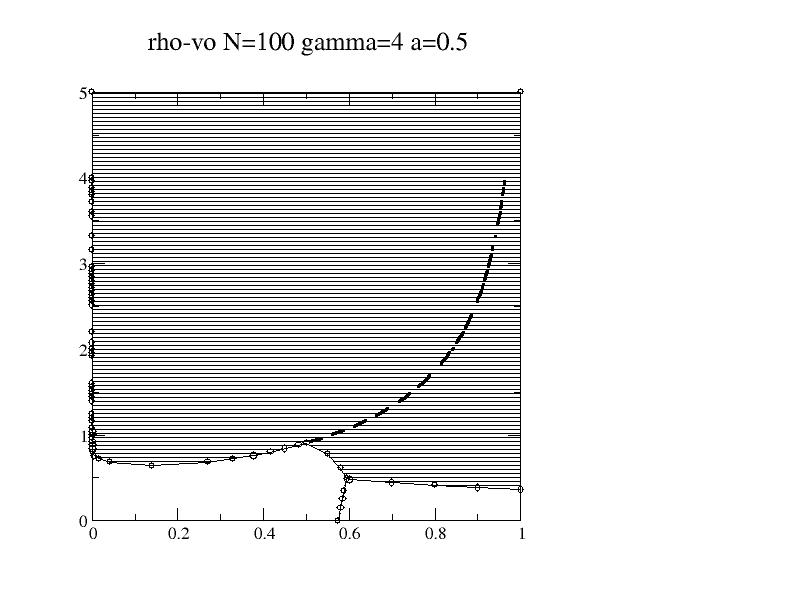 |
N=1000, G=4 a=0.5  |
N=10, G=8 a=0.5 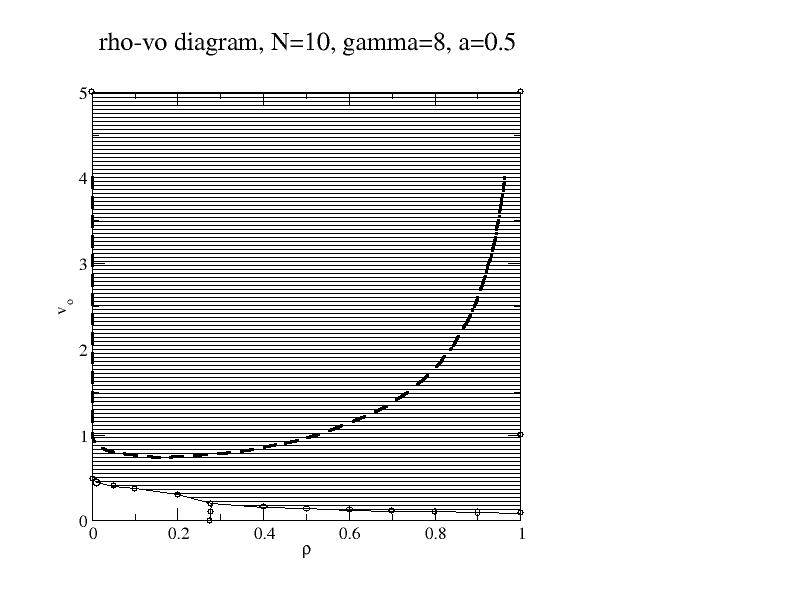 |
N=100, G=8 a=0.5  |
N=1000, G=8 , a=0.5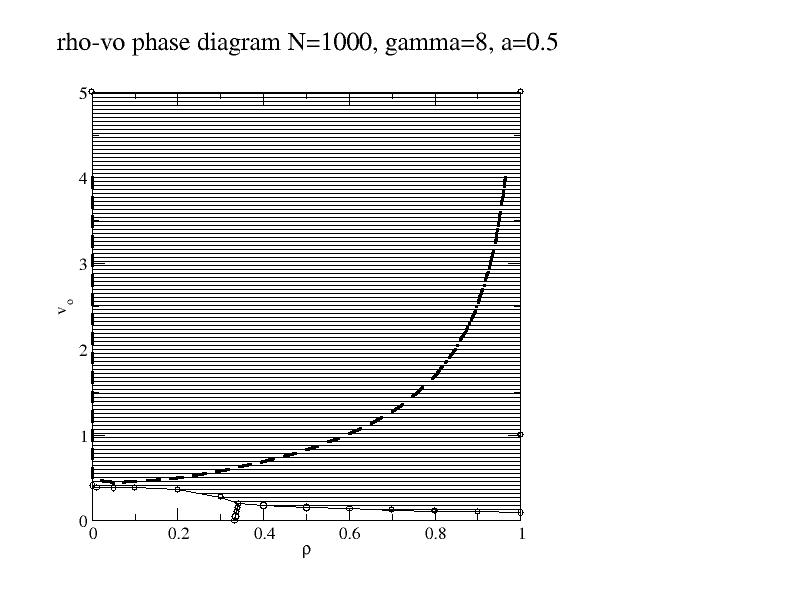 |
N=10, G=2 a=0.25
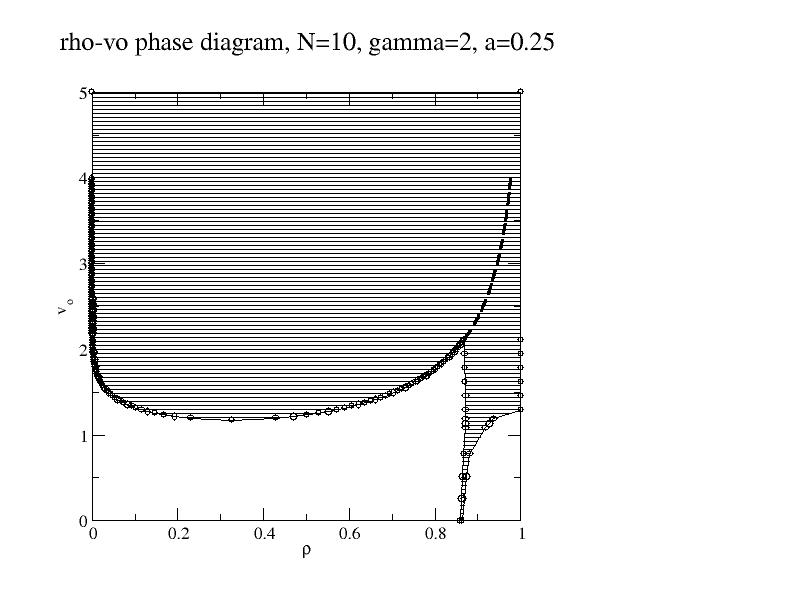 |
N=100, G=2 a=0.25
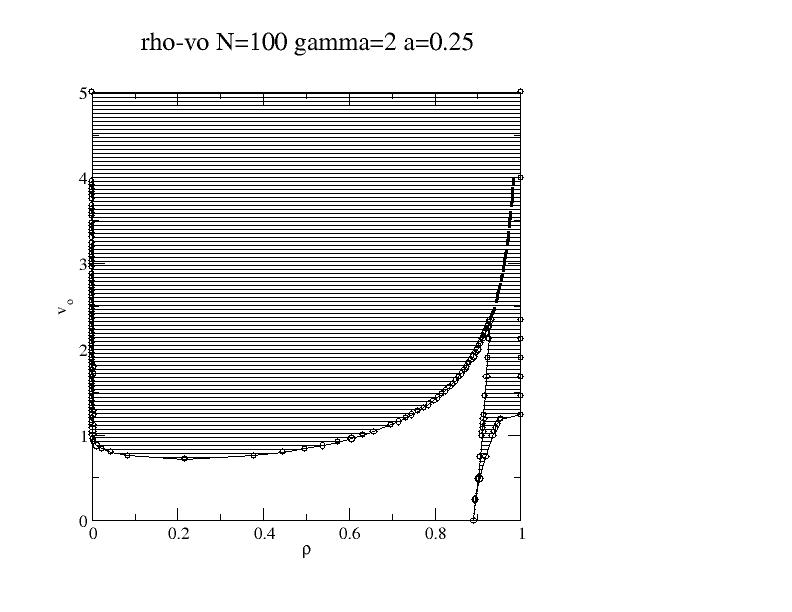 |
N=1000, G=2 a=0.25 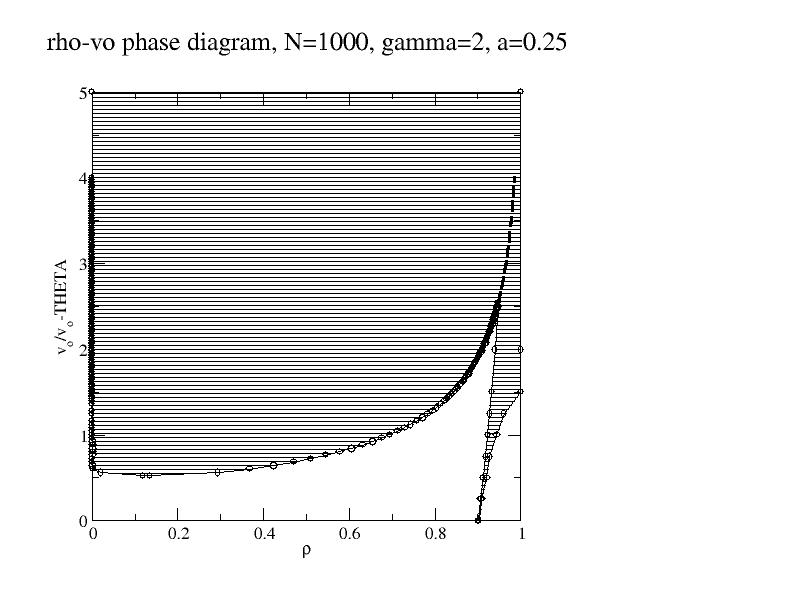 |
N=10, G=4 a=0.25  |
N=100, G=4 a=0.25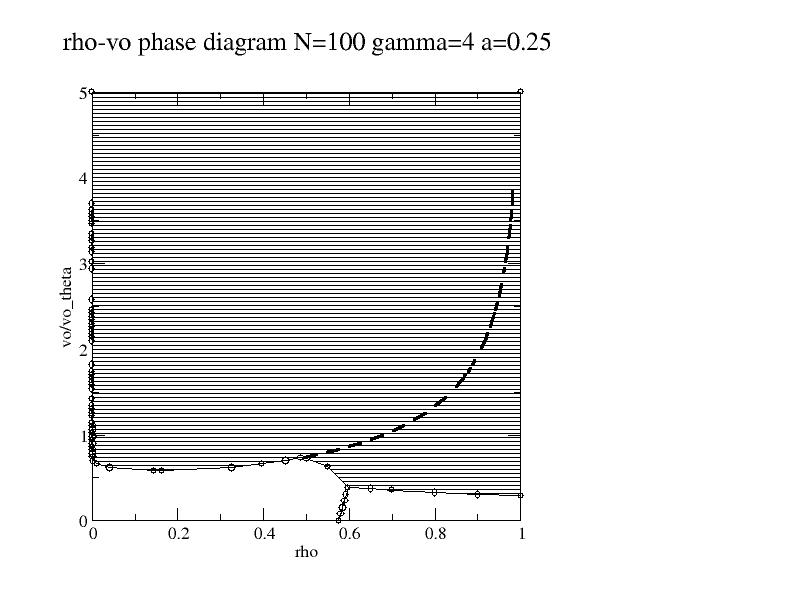 |
N=1000, G=4 a=0.25 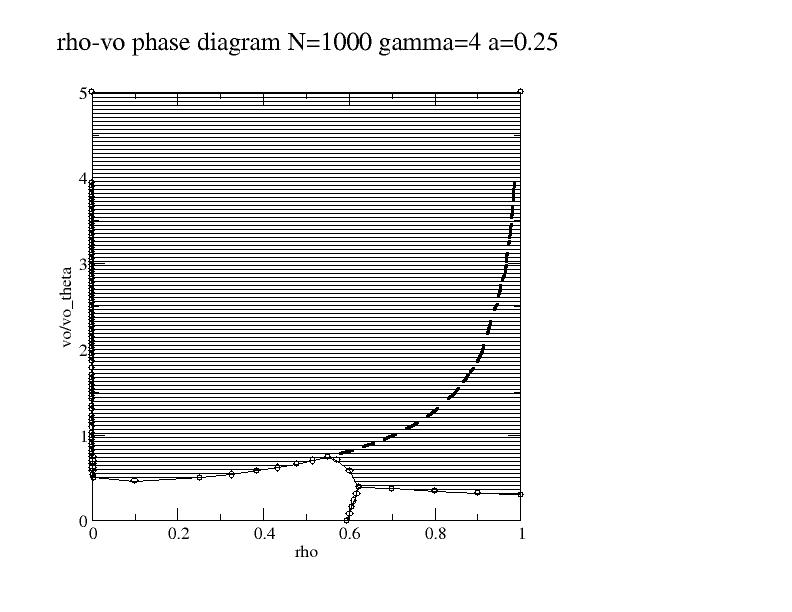 |
N=10, G=8 a=0.25  |
N=100, G=8 a=0.25  |
N=1000, G=8 a=0.25 |
last updated: Oct.28, 2002